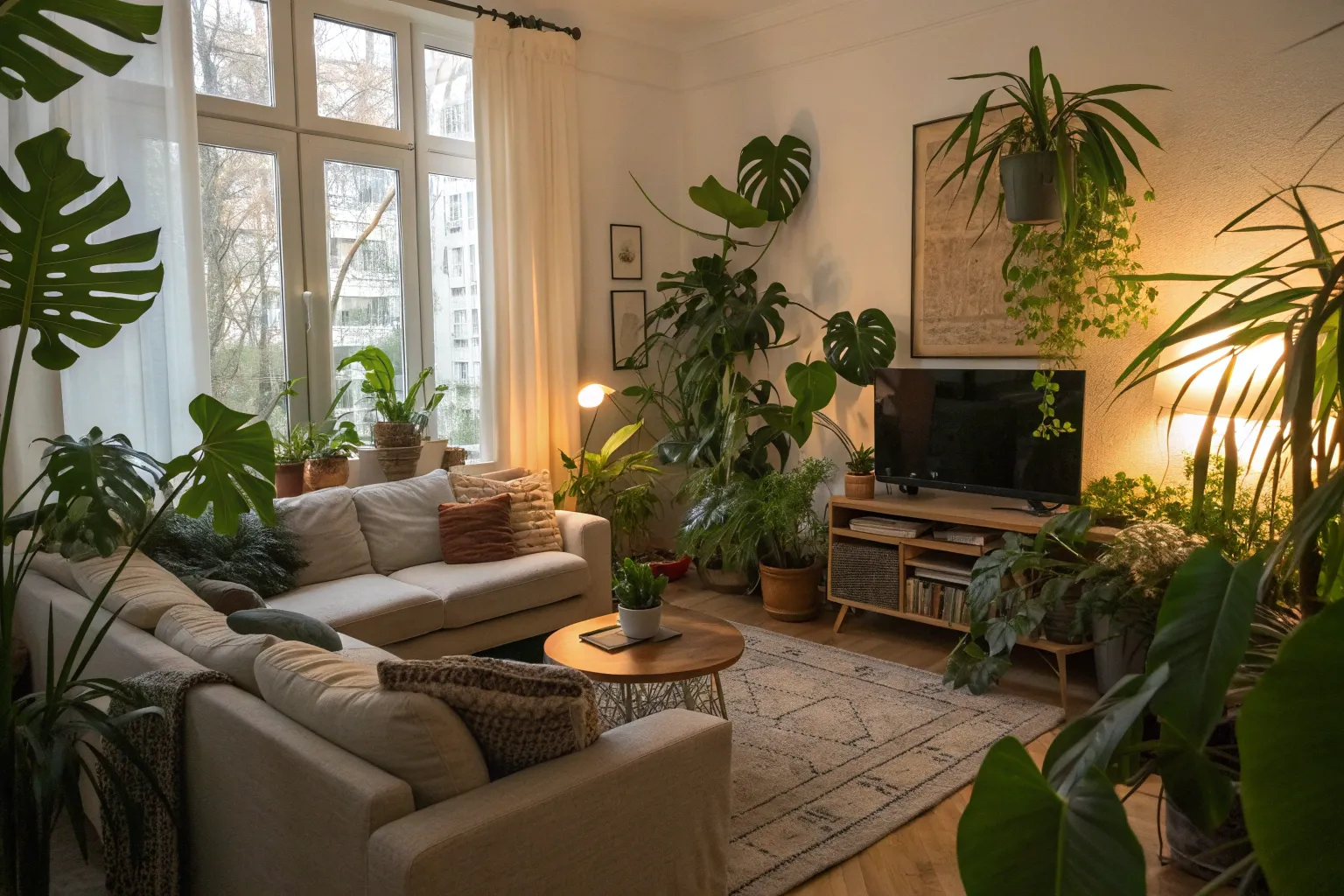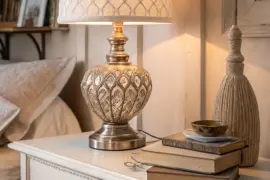Bringing living greenery and natural materials into our homes creates more than visual interest—it establishes a tangible connection to the natural world that supports both physical health and psychological well-being. These simple interventions transform interior spaces into restorative environments that nurture us daily.
Understanding Biophilic Design Principles

The human affinity for nature, termed biophilia, forms the foundation of effective interior greening strategies. Research demonstrates that incorporating natural elements indoors reduces cortisol levels, lowers heart rate and blood pressure, and improves patient outcomes in clinical settings. Rather than viewing plants as mere decoration, I approach them as functional design elements that actively contribute to indoor environmental quality.
Biophilic design operates through three primary categories: direct nature experiences (living plants, natural light), indirect nature experiences (natural materials, organic patterns), and spatial conditions that evoke nature (varied ceiling heights, filtered light). Each category offers distinct opportunities for residential application, from the straightforward addition of potted specimens to more complex interventions like living walls.
Selecting Plants for Indoor Success
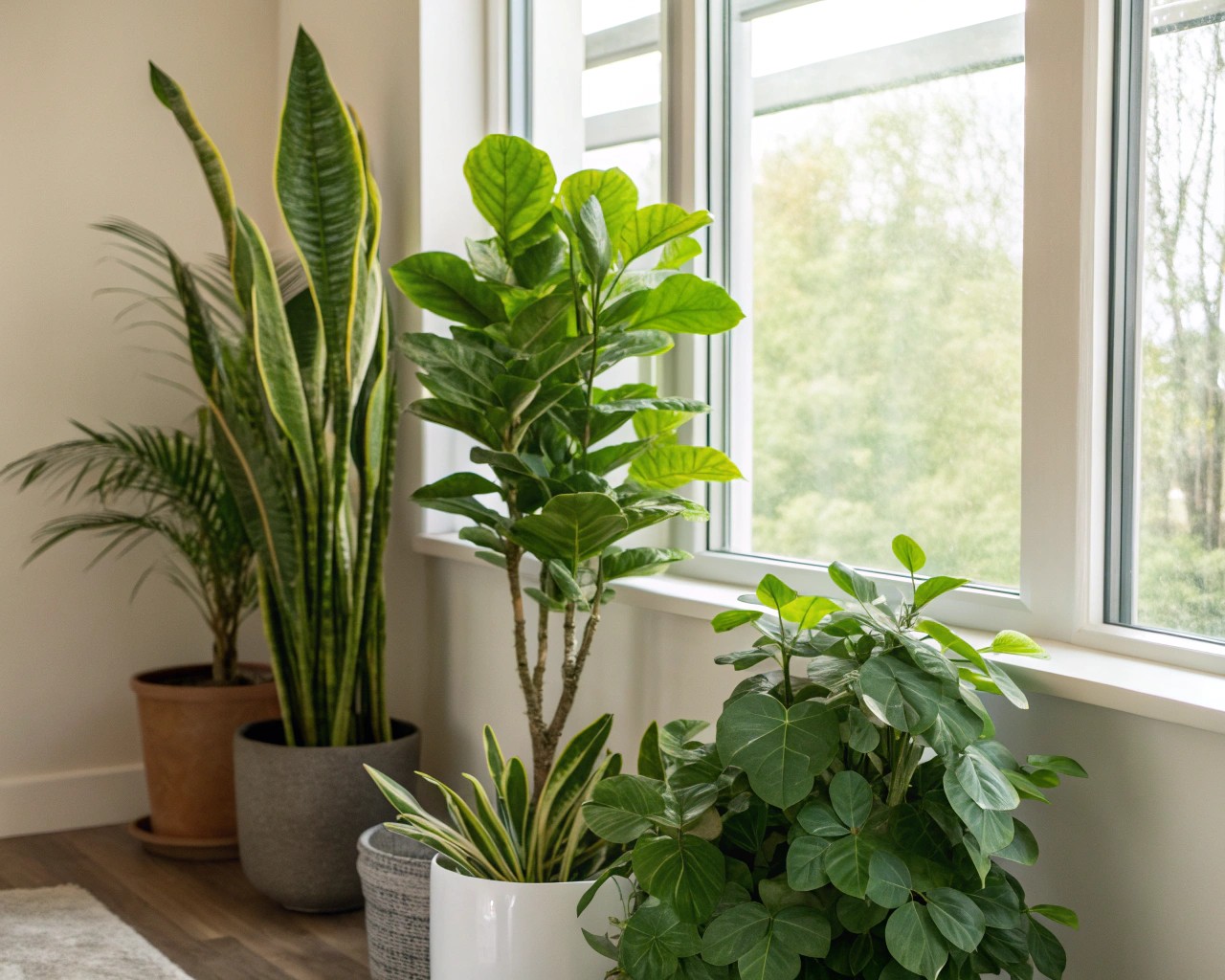
Plant selection determines long-term success more than any other single factor. Rather than choosing specimens based solely on aesthetics, I prioritize compatibility with existing light conditions and realistic maintenance expectations.
Low-Light Performers
North-facing windows and interior rooms present challenging conditions, yet several species thrive in these environments. Snake plants (Sansevieria trifasciata) tolerate neglect exceptionally well, requiring infrequent watering and minimal light while removing benzene, formaldehyde, and other volatile organic compounds from indoor air. ZZ plants (Zamioculcas zamiifolia) perform similarly, with glossy compound leaves that remain attractive even in low-light situations.
Pothos (Epipremnum aureum) adapts to various light levels and propagates readily from stem cuttings, making it economical for creating multiple displays. The trailing growth habit suits hanging planters or elevated shelving.
Moderate Light Requirements
East and west-facing windows provide moderate, indirect light suitable for most houseplants. Spider plants (Chlorophytum comosum) produce cascading stems with small plantlets, creating dimensional interest in hanging baskets. Peace lilies (Spathiphyllum) combine attractive foliage with fragrant white blooms while removing ammonia, formaldehyde, and multiple other pollutants.
Philodendrons, both climbing and self-heading varieties, offer diverse leaf shapes and textures. The heartleaf philodendron (Philodendron cordatum) provides reliable performance with minimal attention.
High-Light Specimens
South and southwest-facing windows receive intense, direct sunlight suitable for desert-adapted species. Aloe vera serves dual purposes—removing benzene and formaldehyde from air while providing gel for minor burns. The plant develops dark spots when exposed to high levels of certain volatile organic compounds, functioning as a natural air quality indicator.
Cacti and succulents offer sculptural forms with minimal water requirements, though afternoon western light can prove too intense for some species. Morning eastern light provides gentler conditions for sun-loving plants.
Light Management Strategies
Window orientation fundamentally determines which plants will thrive in specific locations. I use a compass application to identify precise window directions, as even seemingly minor variations affect light intensity and duration.
Maximizing Available Light
Position plants within three to eight feet of appropriate windows, with distance adjusted based on window size and seasonal variations. Rotate specimens quarterly to ensure even growth and prevent leaning.
Mirrors placed strategically near plants increase natural light exposure while doubling the visual impact. Light-colored walls reflect additional illumination into darker corners.
During winter months when natural light decreases, plants enter dormancy and require adjusted care—less frequent watering and no fertilization. Forcing growth during this rest period weakens plants for subsequent seasons.
When Natural Light Proves Insufficient
Windowless spaces cannot sustain healthy plants long-term, even with supplemental grow lights. Instead, I recommend rotating cut foliage displays—branches, palm fronds, or dried grasses that bring green elements without requiring photosynthesis. These materials offer sculptural qualities while acknowledging spatial limitations honestly.
Styling with Natural Containers and Materials
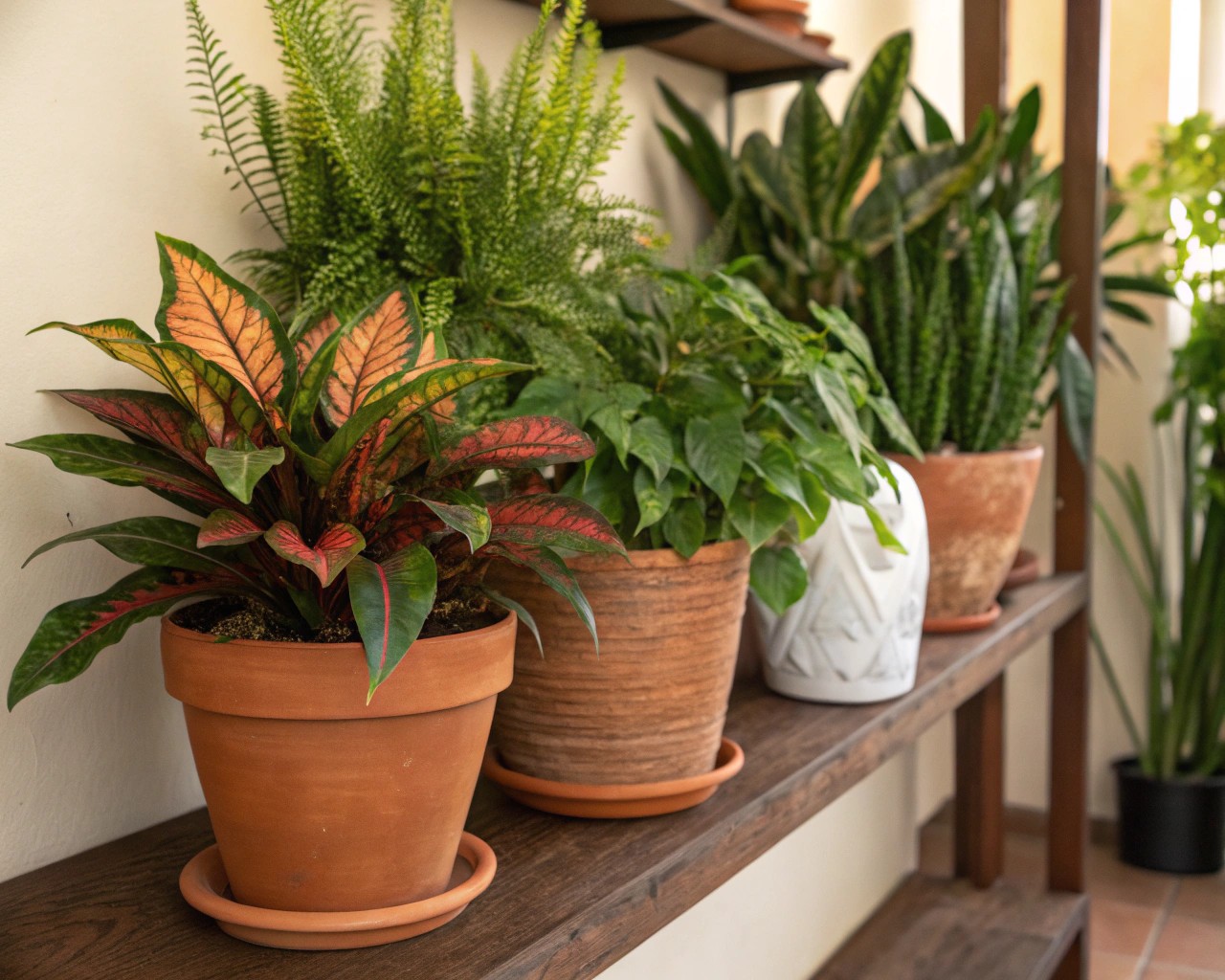
Container selection affects both plant health and aesthetic cohesion. Natural materials—terracotta, ceramic, wood, stone—integrate more seamlessly into biophilic schemes than synthetic alternatives.
Terracotta’s Functional Beauty
Unglazed terracotta’s porous clay structure allows air and moisture movement through container walls, preventing root rot while drawing excess water from soil. This drainage proves essential for cacti, succulents, and Mediterranean herbs that require periods of dryness between waterings.
The material develops attractive patina over time as mineral deposits migrate through the walls—a natural aging process that adds character rather than appearing worn. For plants requiring consistently moist soil, terracotta’s rapid drying necessitates more frequent watering, making glazed ceramic more appropriate.
Ceramic Versatility
Glazed ceramic containers retain moisture longer than terracotta, suiting ferns, baby’s tears, and other species preferring evenly damp conditions. The glaze provides a moisture barrier that slows evaporation while offering unlimited aesthetic options—colors, patterns, and finishes that coordinate with existing décor.
When using ceramic containers without drainage holes, I create a false bottom by layering coarse gravel or river stones beneath the plant’s nursery pot, allowing water to drain away from roots while maintaining the decorative outer vessel.
Natural Accents Beyond Traditional Pots
Woven seagrass and water hyacinth baskets provide texture while remaining biodegradable and sustainable. Wooden boxes and crates introduce rustic warmth, though they require waterproof liners to prevent rot.
Stone and concrete vessels offer permanence and weight, anchoring larger specimens while providing thermal mass that moderates soil temperature fluctuations.
Creating Visual Impact Through Grouping
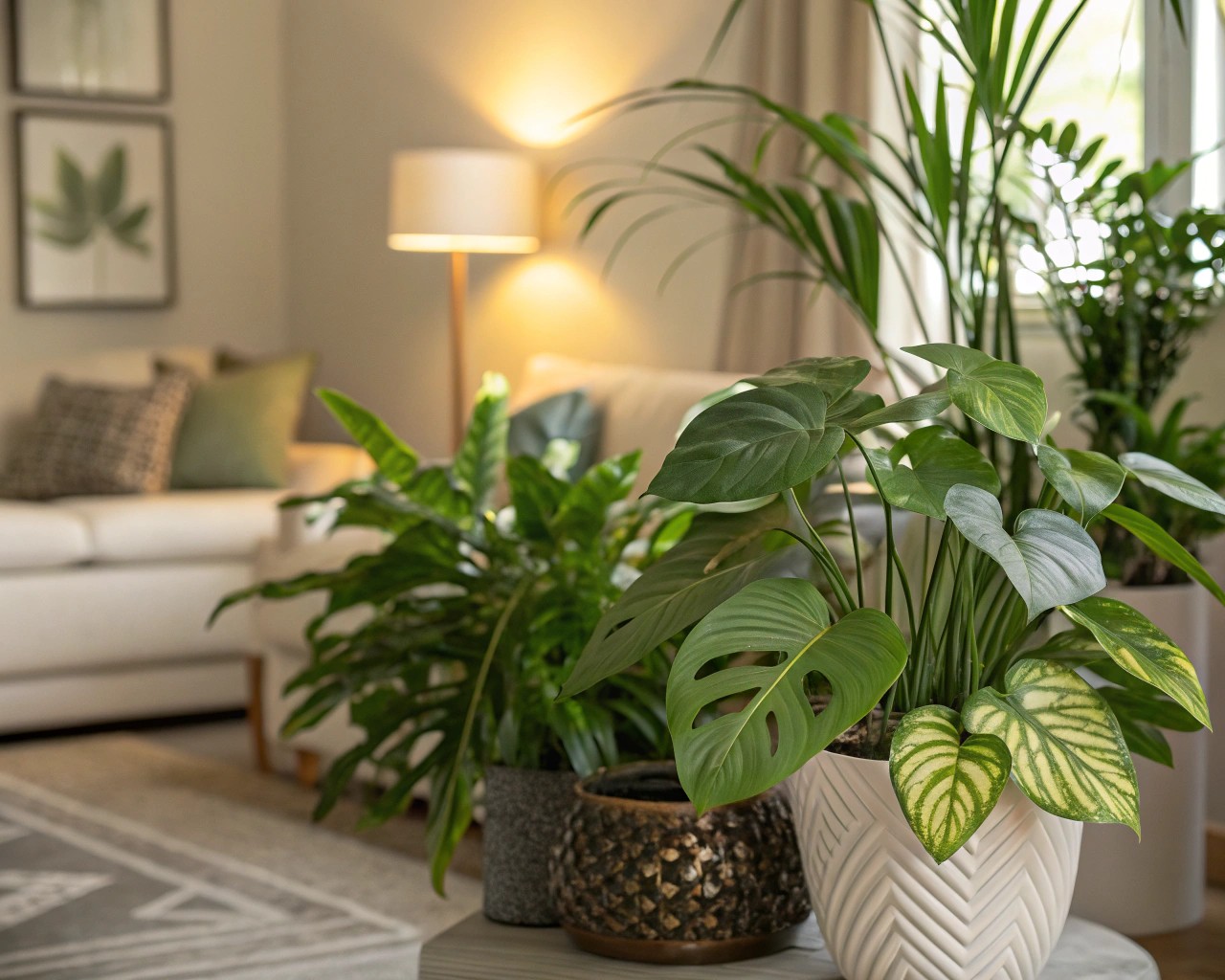
Isolated plants scattered throughout rooms rarely achieve the visual weight of intentional groupings. I arrange specimens in odd-numbered clusters—three, five, or seven plants—which appear more natural and balanced than even numbers.
The “Thriller, Filler, Spiller” Principle
Borrowed from container gardening, this approach combines three growth habits for dimensional interest:
- Thriller: A tall, upright specimen (snake plant, dracaena, or palm) provides vertical emphasis
- Filler: A full, bushy plant (pothos, philodendron, or fern) adds mass at mid-height
- Spiller: A trailing variety (string of pearls, creeping fig, or ivy) cascades over edges
This layering creates depth while ensuring each plant remains visible rather than competing for attention.
Functional Benefits of Clustering
Beyond aesthetics, grouped plants create localized humidity through collective transpiration—each specimen releases water vapor that benefits its neighbors. This microclimate proves particularly valuable during winter when central heating reduces indoor humidity to uncomfortable levels, often below 20 percent.
I position humidity-loving plants—ferns, calatheas, orchids—in bathroom or kitchen locations where ambient moisture naturally runs higher. For drier rooms, grouping these plants together on pebble trays filled with water amplifies the humidity-raising effect.
Incorporating Natural Materials and Textures
Living plants represent only one dimension of nature-inspired design. Natural materials throughout a space reinforce the biophilic connection through tactile and visual experiences.
Wood in Multiple Applications
Solid woods—oak, walnut, cedar, pine—introduce warmth and organic grain patterns through furniture, shelving, and architectural elements. Each species exhibits distinct characteristics: oak’s strength and classic appearance, walnut’s rich depth, cedar’s moisture resistance, pine’s light, airy quality.
Reclaimed wood adds character and history while reducing environmental impact. I avoid engineered products like MDF when possible, as they lack the aesthetic grain and organic variation of solid timber.
Stone and Mineral Elements
Marble, granite, slate, and other natural stones provide cool, smooth surfaces with unique color variations. These materials perform well as countertops, tabletops, or decorative objects where their weight and permanence contribute to spatial grounding.
For smaller interventions, slate coasters, marble serving pieces, and stone vases layer natural textures throughout rooms without requiring major renovations.
Woven Materials and Organic Fibers
Rattan, bamboo, jute, and wicker bring lightweight texture and visual warmth. These materials derive from rapidly renewable sources, making them environmentally responsible choices.
Rattan furniture curves gracefully, offering distinctive forms unavailable in rigid materials. Jute rugs provide durable, textured flooring that grounds spaces while remaining affordable. Natural fiber baskets serve both functional and decorative purposes, concealing storage while contributing organic patterns.
Seasonal Rotation and Foraged Elements
Rather than maintaining static displays year-round, I embrace seasonal rotation that reflects changing outdoor conditions and keeps interior spaces dynamic.
Spring and Summer Abundance
Warmer months support fresh flowers, leafy branches, and abundant foliage. Cut flowering stems—lilacs, peonies, hydrangeas—provide temporary color that complements permanent plantings. I arrange these in groups of single varieties rather than mixed bouquets, which creates cleaner, more modern compositions.
Fresh herbs in small pots transition easily between kitchen counters and outdoor patios, providing culinary function alongside greenery.
Autumn Textures
As temperatures cool, I shift toward preserved materials—dried grasses, seed pods, fall branches with leaves intact. These elements retain their form for months, requiring no water while offering sculptural interest.
Foraging local materials connects interior décor directly to regional landscapes. I clip branches with interesting curves or textures, tie them with simple twine, and hang them as wall art—an intervention that costs nothing while providing authentic natural beauty.
Winter Simplicity
Winter calls for evergreen branches, dried botanicals, and preserved elements that acknowledge the season’s austerity. I use cedar stems, pine boughs, and eucalyptus for their enduring forms and subtle fragrance.
Dried arrangements in matte ceramic or terracotta vessels align with earth tones and natural materials. I avoid glass vases with dried materials, as the contrast appears dated rather than intentional.
Living Walls for Vertical Impact
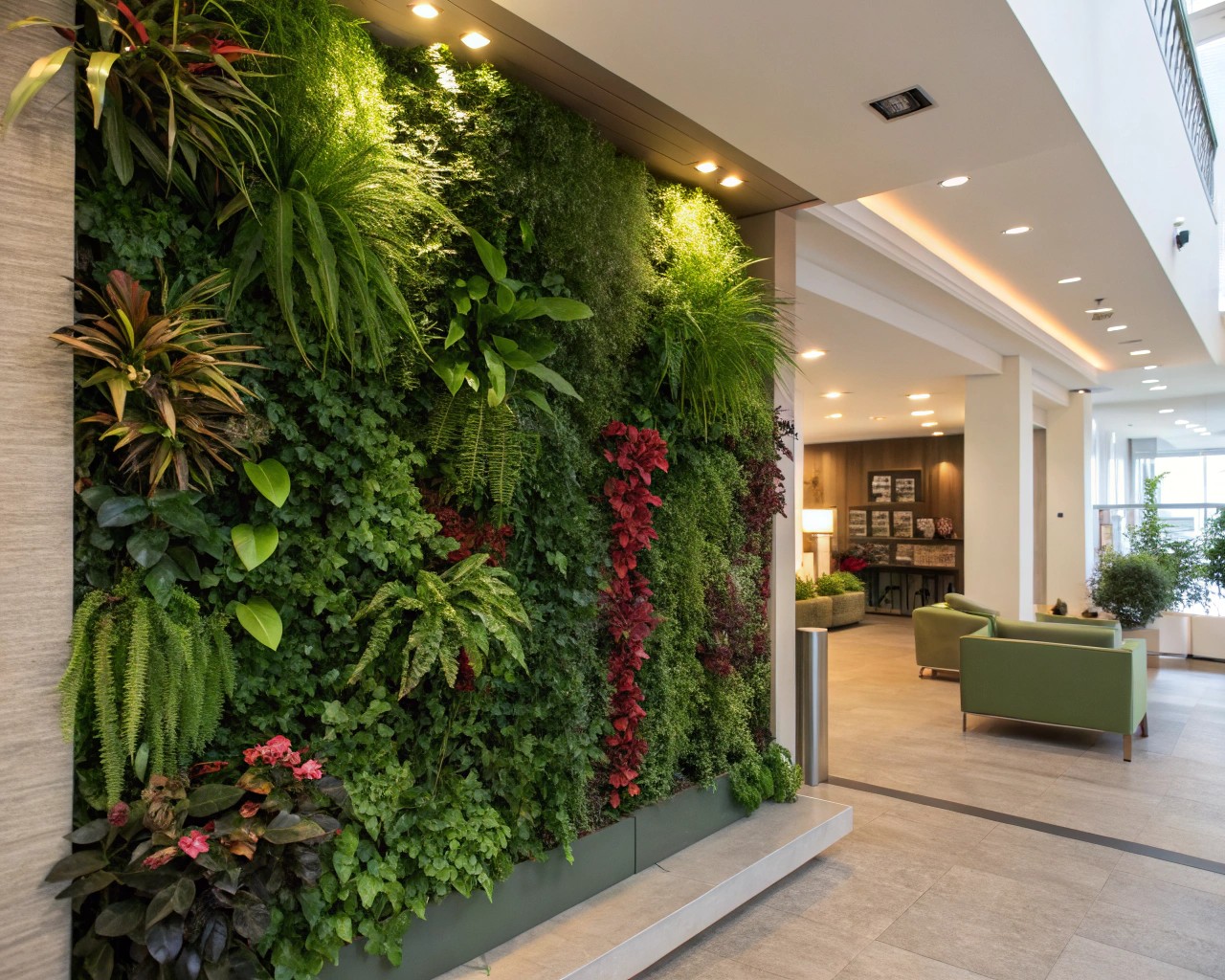
When floor space proves limited, vertical gardens provide dramatic biophilic interventions while maximizing unused wall surfaces. These installations range from simple modular systems to complex hydroponic designs.
Modular Living Wall Systems
Pre-planted panels or modules mount directly to walls, offering quick installation without major construction. The panels typically incorporate felt or recycled plastic substrates that support root systems while remaining lightweight.
For residential applications, I prefer systems with individual plant pockets that allow species-specific care rather than shared root zones where one failing plant compromises neighbors. This modularity also permits seasonal plant rotation and easy replacement.
Selecting Appropriate Species
Living walls in indoor environments require plants tolerant of vertical orientation and potential irrigation irregularities. Pothos, philodendrons, ferns, and peace lilies adapt well to these conditions, offering diverse textures and forms.
Trailing plants like string of pearls or creeping fig create cascading effects that emphasize the vertical dimension. I avoid plants requiring frequent pruning or those prone to pest problems, as elevated maintenance complicates access.
Irrigation Considerations
Self-watering systems prove essential for vertical installations exceeding six feet in height. Drip irrigation or wicking systems distribute moisture evenly while preventing the runoff problems associated with manual watering.
Even with irrigation systems, I position living walls away from furniture and textiles to protect against occasional overflow or humidity damage.
Understanding Plant Care Fundamentals
Successful indoor gardening requires understanding basic physiological needs—water, light, nutrients, and appropriate temperatures. I approach care systematically rather than intuitively, as plant responses often contradict human expectations.
Watering Practices
More houseplants succumb to overwatering than any other cause. I water thoroughly when the root zone’s lower two-thirds begins drying, allowing water to drain freely from the bottom of containers. Saucers beneath pots catch overflow but should be emptied within hours—standing water invites root rot.
Tepid water prevents shock to roots. I avoid watering on fixed schedules, instead checking soil moisture before each irrigation. Some plants—African violets, Rex begonias—require water before soil completely dries, while others—cacti, succulents—tolerate extended dry periods.
Humidity Requirements
Most houseplants originate from tropical regions where humidity ranges between 50-80 percent, far exceeding the 20 percent typical in heated buildings. Symptoms of insufficient humidity include brown leaf margins, crispy tips, and slow growth.
Beyond grouping plants to create microclimates, I use pebble trays and occasional misting to raise ambient moisture. Room humidifiers benefit both plants and human occupants, particularly during winter.
Plants with fuzzy leaves—African violets, purple heart plants, velvet philodendrons—should never be misted, as water trapped by leaf hairs encourages disease and spotting.
Fertilization and Dormancy
During active growth periods (spring and summer), most houseplants benefit from monthly fertilization with diluted, balanced formulas. I reduce feeding frequency in fall and eliminate it entirely during winter dormancy, when decreased light naturally slows growth.
Forcing growth during dormant periods with fertilizer or supplemental light weakens plants and reduces subsequent vigor.
The Wellness Benefits of Indoor Greening
While aesthetic improvements motivate many biophilic interventions, the measurable wellness benefits justify this design approach practically.
Physiological Effects
Exposure to natural elements reduces stress hormones, particularly cortisol, while lowering heart rate and blood pressure. These effects occur even with brief exposure—studies show benefits from simply viewing natural scenes.
Natural light exposure regulates circadian rhythms, improving sleep quality and reducing symptoms of seasonal affective disorder. I maximize natural light through window treatments that diffuse rather than block illumination.
Cognitive Performance
Research demonstrates that workers in offices with natural elements experience increased productivity (approximately 15 percent), improved comfort (25 percent), and reduced absenteeism. While these studies focus on commercial spaces, similar benefits extend to residential environments where we spend concentrated time working, reading, or engaging in creative pursuits.
Plants improve concentration and support cognitive function by creating tranquil environments that reduce mental fatigue.
Air Quality Considerations
The NASA Clean Air Study (1989) identified numerous plant species that remove volatile organic compounds from sealed environments. However, subsequent research reveals that achieving meaningful air purification in typical buildings would require 10-1,000 plants per square meter—an impractical density for residential spaces.
Standard building ventilation removes VOCs more effectively than plants in normal conditions. I position plants for their psychological and aesthetic benefits rather than relying on them for air purification, though any marginal improvement in air quality provides additional value.
Practical Implementation Strategies
Successful biophilic design begins with honest assessment of existing conditions—available light, realistic maintenance commitments, and spatial constraints—then builds incrementally rather than attempting comprehensive transformation immediately.
| Implementation Approach | Initial Time Investment | Maintenance Level | Spatial Flexibility | Visual Impact |
|---|---|---|---|---|
| Individual potted plants | Low (1-2 hours) | Varies by species | High | Moderate |
| Grouped plant displays | Moderate (3-4 hours) | Moderate | Moderate | High |
| Living walls | High (6-8+ hours) | High | Low | Very high |
| Seasonal foraged elements | Low (1 hour) | Very low | High | Moderate |
| Natural material integration | Variable | Very low | Low to moderate | High |
Start Small and Observe
I recommend beginning with three to five plants in appropriate locations, observing their performance for several months before expanding. This approach allows you to develop care routines and understand how your specific environment affects plant health without overwhelming yourself or investing heavily in specimens that may struggle.
Select at least one low-maintenance species—snake plant, pothos, or ZZ plant—to build confidence. As these thrive, introduce plants with more specific requirements.
Layer Interventions Over Time
After establishing successful plant care practices, layer additional biophilic elements: natural fiber rugs, wood furniture pieces, stone accessories. This gradual approach prevents spaces from feeling suddenly unfamiliar while allowing you to assess each change’s impact.
Embrace Imperfection
Some plants will struggle or fail—this represents normal horticultural experience rather than personal shortcoming. I’ve killed numerous plants through overwatering, underwatering, or mismatched placement, and each loss taught valuable lessons about specific species’ requirements.
Dead foliage removed promptly, browned tips trimmed, and occasional plant replacement maintain displays without requiring perfection.
Synthesis: Creating Your Personal Green Haven
Indoor greening succeeds when it reflects genuine enthusiasm rather than design obligation. The specimens you water regularly, the natural materials that make you pause and touch them, the seasonal branches that connect you to local landscapes—these personalized choices create environments that truly nurture.
I’ve found that biophilic design works best when integrated gradually, with each element selected intentionally for specific spatial and functional roles. The fiddle leaf fig that anchors your reading corner, the trailing pothos cascading from a high shelf, the smooth river stones collected during a memorable hike—together these pieces build environments that support both the active growth of plants and the quieter growth of human wellbeing.
Start where you are, with what you have, and let your indoor green spaces evolve as naturally as the plants themselves.

